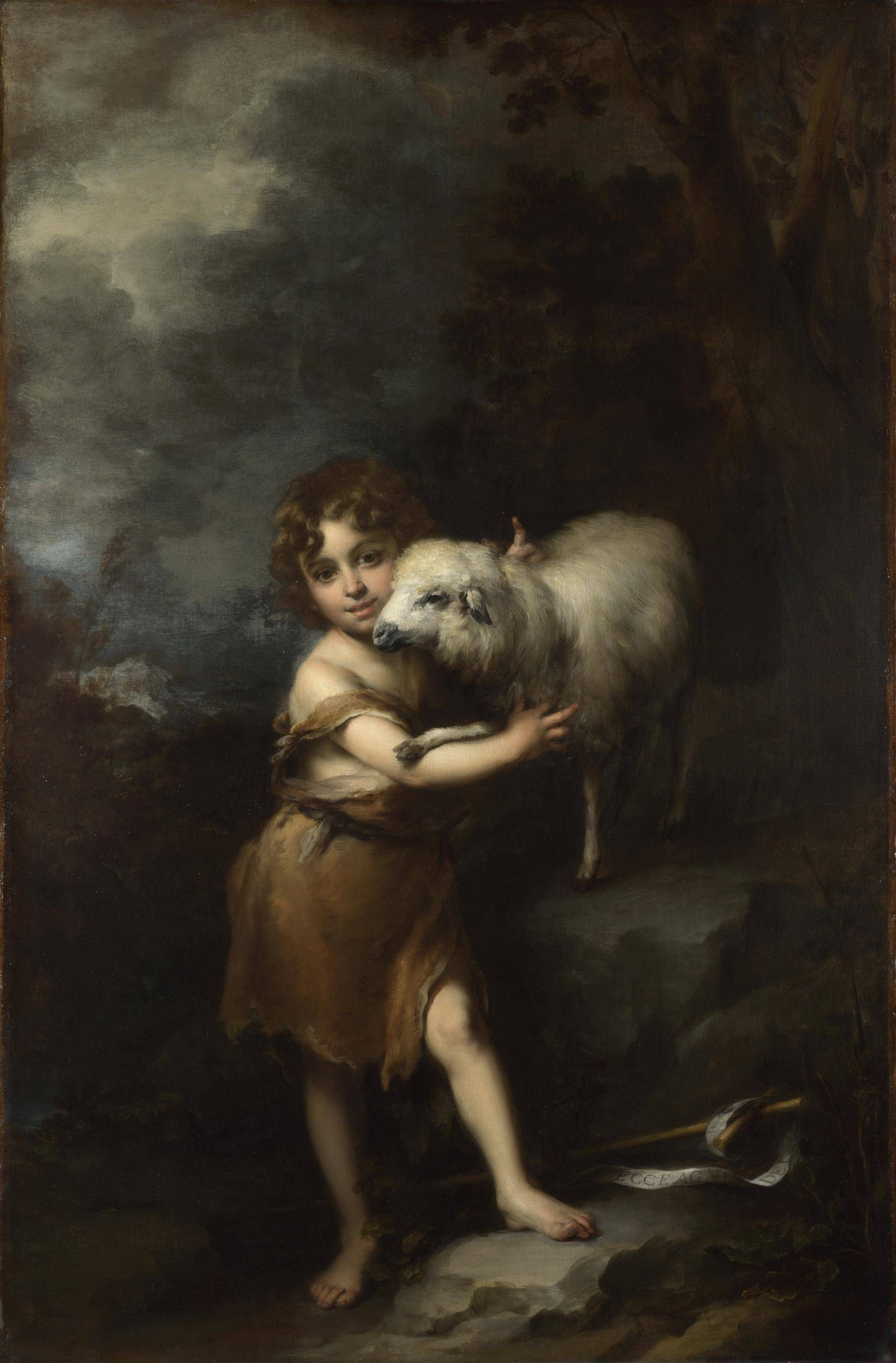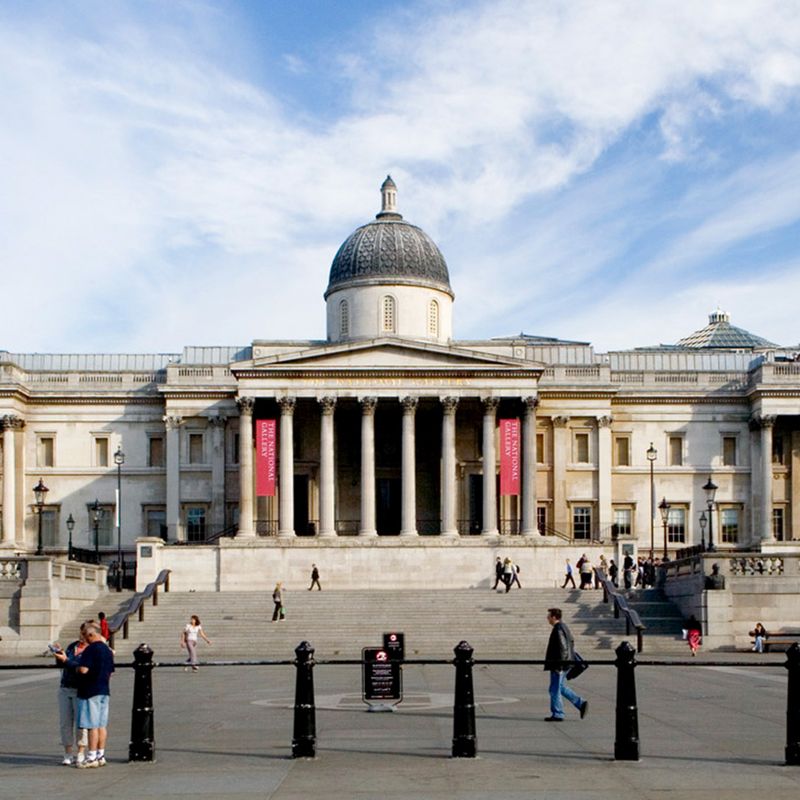
The Infant Saint John with the Lamb
According to the Gospel of Matthew, Saint John the Baptist lived in the wilderness, clothed in nothing but camel's hair and eating only locusts and honey. There, he baptised the people of Judea and preached the coming of Christ. Although he is supposed to have done this as a young man - and Murillo represents him as such in Saint John the Baptist in the Wilderness - the artist often depicted him as an angelic child.
Saint John is shown embracing a lamb, a symbol of Christ's sacrifice. The interaction between the two has a very human quality: the saint's forearm is affectionately entwined with one of the animal's dainty legs. He points towards heaven, referring to his encounter with Christ as told in the Gospel, when Saint John declared: 'Behold, the Lamb of God' (John 1: 29). These words are inscribed in Latin on a ribbon wound around a reed cross, one of John's attributes.
The lamb also refers to Christ's role as the Good Shepherd, who guards his sheep from harm, in the same way that Christ is believed to have sacrificed his life for humanity's salvation. This is further underlined by the painting's original pendant, Murillo's The Young Christ as the Good Shepherd (private collection), with which it remained until 1840. There, a boy Christ holds a shepherd's crook and is surrounded by a small flock of sheep, his hand resting gently on one of them.
By transforming adult biblical characters into children, Murillo appealed to viewers, encouraging them to emulate a child-like state of innocence and purity. This was something for which Murillo was particularly admired, and his paintings of children inspired eighteenth-century British painters Thomas Gainsborough and Sir Joshua Reynolds.
The work we see here was made for Don Justino de Neve, a canon of Seville Cathedral and one of Murillo's most devoted patrons (the artist also painted his portrait). In 1665, Justino lent this and several other paintings by Murillo to the church of Santa María la Blanca in Seville. During festivities marking the newly reconstructed church's inauguration, a spectacular temporary altar was erected in the square in front of the church's facade. According to contemporary accounts, Murillo's Immaculate Conception of the Venerables Sacerdotes (Prado, Madrid) was in the centre, flanked by The Infant Saint John with the Lamb on the left and The Young Christ as the Good Shepherd on the right. Francisco de Herrera the Younger's Adoration of the Eucharist was placed on the upper register.
Judging by the numerous engravings after this picture, it was one of Murillo's most popular and recognisable paintings, especially after it entered our collection in 1840.
Credit: Bought, 1840
1660-5
Oil on canvas
165.0 x 106.0 cm
NG176
Image and text © The National Gallery, London, 2025
Where you'll find this

National Gallery
Permanent collection





